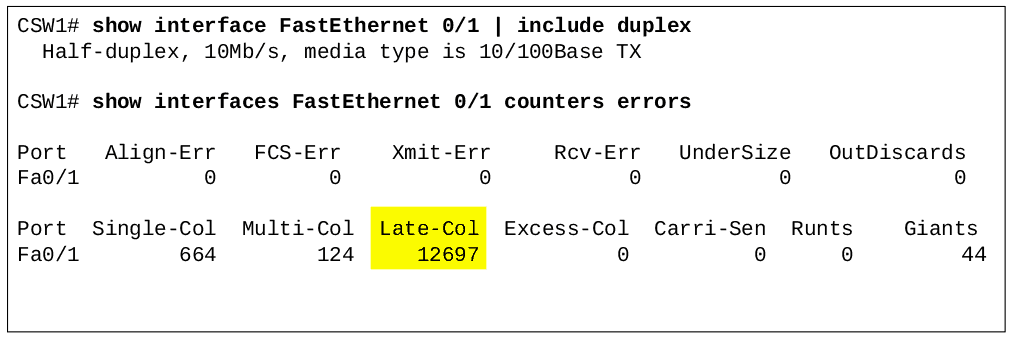Definition of late collision in The Network Encyclopedia.
What is Late Collision?
Late Collision is a collision on an Ethernet network that is detected late in the transmission of the packet. Late collisions can result from defective Ethernet transceivers, from having too many repeaters between stations, or from exceeding Ethernet specifications for maximum node-to-node distances.
How it works
Signals on a cable do not travel instantaneously from point to point. Instead, they travel at a fixed speed, which is near the speed of light on copper cabling. If segments of an Ethernet network are too long, collisions can occur that are not detected by the stations on the network. This can result in lost or corrupted data. Collisions are natural on an Ethernet network, and they occur when two stations transmit their signals simultaneously or almost simultaneously. When the stations detect the collision (the concurrent signal from the other transmitting stations), they stop their transmission and wait a random time interval before attempting a retransmission.
But the Ethernet standard specifies that if a station on the network is able to transmit 64 bytes or more before another signal is detected, the first station is considered to be “in control” of the wire and can continue to transmit the remainder of its frame, while the second station must stop transmitting and wait.

If the distance between two transmitting stations exceeds the particular Ethernet specification, the stations might not become aware soon enough that another station already has control of the wire. The resulting collision of signals results in a data packet that is more than 64 bytes in length, which is allowable but which contains cyclical redundancy check (CRC) errors, resulting in unreliable communication.
Why is this a problem?
Late collisions are a problem because once the NIC (Network Interface Card) misses the fact that a collision has occurred, recovery and retransmission are left to the upper layers and recovery time goes up drastically. While a NIC will typically recover and retransmit a frame in 2-3 milliseconds, it typically takes anywhere from 10 to 100 times that long for upper layers.